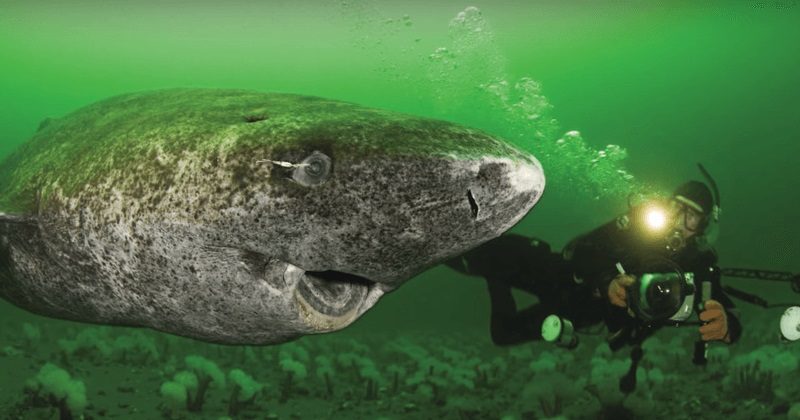400-year-old shark found in the Arctic could be the oldest living vertebrate

A 400-year-old Greenland shark, which would have reached sexual maturity at around 150 years, sets a new record for being the oldest living vertebrate.
Scientists have made a startling discovery where they have found a shark whose age was estimated to be at least 392 years. Yes, a Greenland shark has been found in the Arctic region and could very well be the oldest living vertebrate on the planet. The research is published in the journal Science.
The researchers have measured the creature and estimated that it could be born as early as 1505. Known to live in temperature less than -1 degree Celcius, these creatures can swim as deep as 7,200 feet and weigh more than a tonne.
According to reports, the shark measured 18ft in length. It is this length which reportedly can mean the shark can be anywhere between 272 to 512 years old, as this species grows at a rate of 1 cm a year.
It is the oldest among the 28 Greenland sharks that are analyzed. These sharks have an estimated lifespan of 400 years and they spend their time swimming around looking for mates.
But determining the exact age of the Greenland shark is a tricky business. Researchers used a technique called eye lens radiocarbon dating. The eye lenses of all vertebrates continue to grow with the animal through its life, adding layers like an onion. In the late 1950s, atmospheric tests of thermonuclear weapons caused a big and easily detectable spike in the amount of radiocarbon that eventually made its way into the sea. Scientists call this bump ‘the bomb pulse’, and it has become a handy way to verify the age of marine organisms. If the amount of radiocarbon in a shark’s lens represents post-bomb-pulse levels, that’s a pretty clear indicator that the animal was born after 1960.
Researchers found that the eye lens proteins of the two smallest of the 28 Greenland sharks had the highest levels of carbon-14, suggesting that they were born after the early 1960s. The third smallest shark, however, had carbon-14 levels only slightly above those of the 25 larger sharks, hinting that it was actually born in the early 1960s.
It’s not totally clear why Greenland sharks live for so long. Scientists postulate that it may be in their genes, or it could be the fact that they live in relatively cold temperatures and have a slow metabolism.
The distribution of this species is mostly restricted to the waters of the North Atlantic Ocean and the Arctic Ocean. The Greenland shark is an apex predator and mostly eats fish. It has never been observed hunting. Recorded fish prey have included smaller sharks, skates, eels, herring, capelin, Arctic char, cod, rosefish, sculpins, lumpfish, wolffish, and flounder. Greenland sharks have also been found with remains of seals, polar bears, horses, moose, and reindeer (in one case an entire reindeer body) in their stomachs. The Greenland shark is known to be a scavenger and is attracted by the smell of rotting meat in the water.
We might have no exact idea about the reason behind these mysterious creatures for their long lives, but what we can hope is that these vertebrates will boost conservation efforts to protect the species and its habitat. Now that we have found these majestic creatures, it is now up to us to preserve these animals for future generations.
This article originally appeared on captain-planet.net